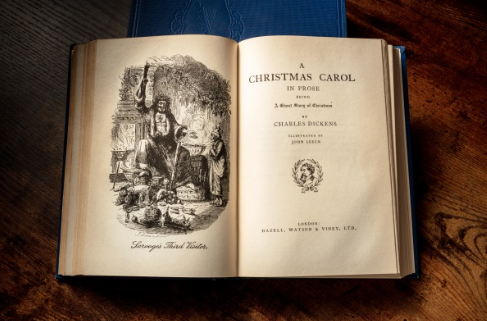It’s beginning to look a lot like a week off. So, we’re dropping an extra-packed issue today to read during your flight to visit loved ones. (You could also read it during a road trip to visit ‘em, assuming you’re not the driver.) From all of us here at b., have a merry and restful holiday break.
|
|
|
Subscription Boxes: The Perfect Last-Minute Gift for Employees?
|
Only 1 in 4 employees at small businesses receive a holiday or end-of-year bonus, according to the Bureau of Labor Statistics. At large companies, it’s a mere 1 in 10. While the holiday bonus might be a relic of the past, many workers still expect a gift from the boss.
So, what if you haven’t bought presents for your employees yet? Should you just send them an Amazon gift card by email so they can pick out something for themselves?
We have a better idea: A curated box subscription. It’s literally a gift that keeps on giving.
“I think gift boxes have redefined the art of gifting in general, especially in the corporate arena,” says Paula Slof, CEO of ekuBOX, whose clients include Netflix, Disney, and Capitol Records. “Gifting is all about making people feel valued — whether they are employees that you work with every day, those who work remotely, or staff you rarely come in contact with but still play a major role in the organization.”
However, you must be somewhat cautious; you want the gift to feel thoughtful but not open to misinterpretation:
- The personal-stylist service Stitch Fix would be a great subscription box for someone who is fashionable and also does not enjoy shopping … but if you’ve ever criticized their wardrobe choices at work, such a gift would seem passive-aggressive.
- Snack boxes have wide appeal, but don’t give one with gourmet beef jerky to your vegan assistant.
- Meal kit services like HelloFresh and Blue Apron have corporate options, but do all of your employees enjoy cooking?
In other words, you want to account for the employee’s interests, but this requires a depth of knowledge that bosses do not always have. “If you really don’t know much about the recipient, employee or client, stay away from anything that is too personal,” Slof advises.
Gourmet olive oil or candy from around the world is (literally) tasteful but not too personal. A keepsake like a nice frame can be appreciated year-round. And something useful, like an artisan soap, can go a long way.
Whatever you end up gifting your colleagues, Slof recommends accompanying it with a handwritten message. “A nice note along with a beautiful gift makes a statement,” she says.
(And ideally, the statement isn’t a reminder of that one time you told them to dress better.)
|
|
|
Two “Ghosts” Newly Promoted Leaders Will Confront
|
|
|
Dr. Steven Rogelberg is a chancellor’s professor at UNC Charlotte, former president of the Society for Industrial and Organizational Psychology, and author of Glad We Met: The Art and Science of 1:1 Meetings.
You’re no Scrooge, but two ghosts can haunt your onboarding as a newly promoted leader. Be prepared to face them so they won’t scare the Dickens out of you.
The Ghost of Your Predecessor
Your team has very fresh memories of the successes and failures of whomever you’ve replaced. Given this, your messages and plans must address this legacy.
It doesn’t mean — at all — that you have to continue doing what your predecessor did (even if relatively successful). But you can’t ignore the past either, as it has set the stage for the future you are proposing. Carefully analyze what your predecessor was good at and not so good at. What initiatives worked? Which ones did not?
This reflection will help you identify potential derailers and traps to avoid; in other words, what you can push on quickly versus what you might want to backburner; key individuals you need to spend extra time with; and how to best craft and position your communications.
The Ghost of Your Past Self
As an internally promoted leader, you’re entering the position with a track record, well-formed relationships, and an established reputation. This isn’t a problem, per se, but it can present a challenge if the role requires seemingly uncharacteristic responsibilities and dynamics (for example, you’re now managing coworkers who consider you a good friend).
It’s worth your time to consider how this can impact your communications and relationships with others. Reflect on what you’ve done well and not so well, what you’ve pushed on and what you haven’t. Recognize that your messaging may need to explicitly acknowledge some of this past and why the new role leads you in a different direction.
As you develop your strategy as a new leader, don’t be afraid of visiting these ghosts. Even if they aren’t literal, neither are they figments of your imagination.
|
|
|
Green Bean Casserole: A Campbell’s Soup Marketing Campaign
|
(Source: Universal Pictures)
|
Turkey or ham might be at the center of your holiday dinner table, but for most Americans, it’s all about the classic side dishes. Surprisingly, one of them wasn’t drawn up in Grandma’s kitchen.
The first green bean casserole dates back to 1955 at the Campbell’s Soup test kitchen. The company wanted to drive cream of mushroom soup sales, and when its chef Dorcas Reilly presented the “Green Bean Bake” to executives, they knew they had a hit, printing the recipe on every can.
Today, green bean casserole makes a yearly appearance in 20 million American homes — and is still responsible for 40% of Campbell’s mushroom soup sales. So, maybe you don’t need to introduce a new product, just a new way of using what you already make. (And be generous with the fried onions.)
|
|
|
Why The Santa Clause’s Bernard the Elf Is a Perfect COO
|
Tim Allen is back as St. Nick for The Santa Clauses on Disney+, a sequel series to the original 1994 holiday classic The Santa Clause. Essentially, the latter taught America’s youth about the importance of playing nice, believing in yourself, and making sure you read the fine print.
It also offers an incredible portrayal of a chief operating officer.
When Scott Calvin (Allen) arrives at the North Pole, destined to take over the Santa mantle — Santle? — he doesn’t know where he is or what he’s meant to do. Head elf Bernard (David Krumholtz) briefs him about his newfound responsibilities; no mere assistant, Bernard is incisive, knowledgeable, and collected as he lays out their operational planning for the next year.
While Santa is the North Pole’s undisputed CEO and face of the brand, Bernard knows the toymaking process better, keeping track of nitty-gritty details so the big guy can focus on his Nice List before the end of Q4. They develop a trustful working relationship, ensuring the success of their collective mission — and a generous executive bonus of milk and cookies.
|
|
|
Written by Lauren Vino, Ali Saleh, and Tess Barker.
|
| | |



.jpg)
.png)

.png)

.jpg)